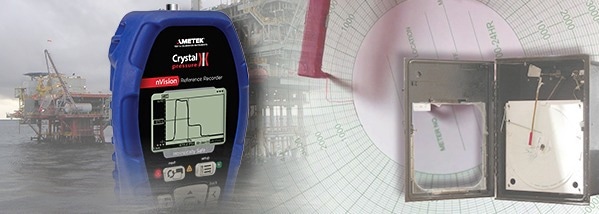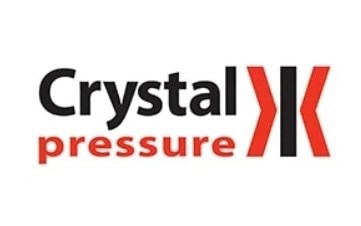Chart recorders are used to generate a paper record of pressure in a system. These devices use ink pens mounted to mechanical arms, which move in response to changes in pressure, creating a continuous trace over time.

Image Credit: AMETEK-Crystal Engineering.
An experienced user may provide an initial analysis on the field’s chart output, but communicating or storing the data electronically is only possible when a technician enters the data or scans the chart into a computer. This process may require days for results to become available.
On top of that, chart recorders are large, heavy, and should be handled with the utmost care. They depend on multiple moving parts that can deteriorate with time, particularly in harsh settings. Even in regular environments, pens can dry out and paper can be depleted or harmed by both heat and humidity.
A Superior Approach
Crystal provides the ultimate solution. The nVision reference recorder can gather and store up to one million data points at logging intervals of as many as ten per second. The data is gathered electronically and kept in non-volatile memory. This means the data will not be lost if the batteries run out during testing. Batteries can last for up to a year in Ultra Low Power Mode.
The kept data can then be observed on the screen, in an easy-to-read graphical format, or transferred to an .xls, .csv, or .pdf file. It’s also possible to generate a tamper-proof, secure, signed .pdf file, which delivers read-only files that cannot be tampered with.
The nVision is built for tough environments. It does not contain moving parts and can resist dropping without damage, unlike a chart recorder. Every unit is IP67 rated, which means it can be submerged in one meter of water for a maximum of 30 minutes. Together with its light weight and compact size, it is the unit of choice for pipeline companies whether they work in the freezing ice scapes of Alaska or the sweltering Sahara.
With 0.025 % reading accuracy, the nVision can deliver deadweight tester accuracy on site. Accuracy stays constant with temperature fluctuation, is shielded from elevated overpressure events, and is unaffected if the gauge is dropped. Unlike a chart recorder, if the nVision sensor gets damaged, it stops recording. This prevents erroneous data from being recorded.
Read the complete article, including a feature comparison, here.

This information has been sourced, reviewed, and adapted from materials provided by AMETEK - Crystal Engineering.
For more information on this source, please visit AMETEK - Crystal Engineering.